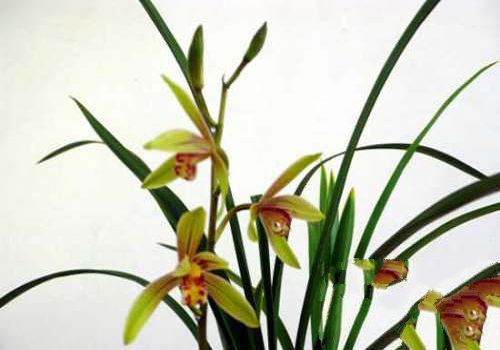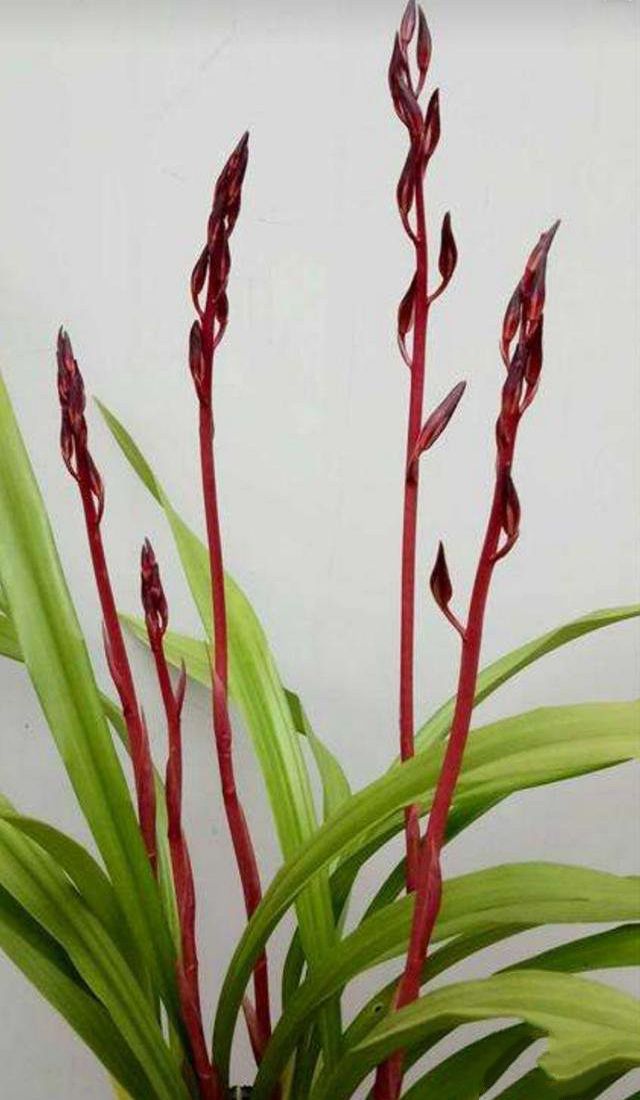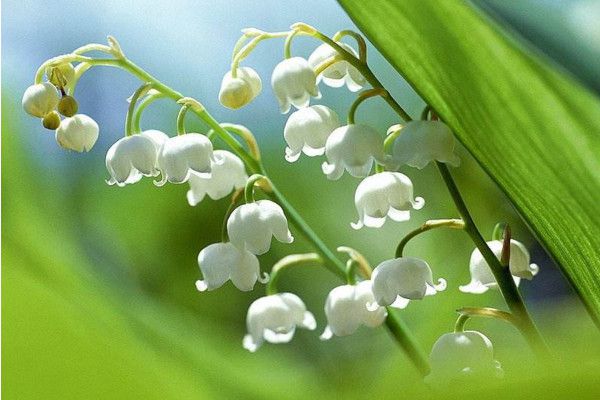How to identify the quality of orchids and the selection and purchase of orchid-growing plants

There are more than 35000 species of Orchidaceae and more than 70 species of Orchidaceae. National orchid varieties are: Chunlan, Jianlan (Siji Orchid), Cymbidium, Chunjian, Cymbidium, Cold Orchid, Lotus Orchid, and some hybrid varieties (such as the "golden child prodigy" in Jianlan is a hybrid of Huilan and Jianlan). There are many varieties in each species, such as Chunlan, Song Mei, Lvyun, and so on.
According to the different flowering seasons of orchids, the species of Chinese orchids can be divided into:
1. Spring flowering, also known as Chunlan. The main varieties are: Songmei, Xi Shenmei, Longzi, Cui Yipin, Wang Zi, Cui Gai he, Yingchun Butterfly, laughing Butterfly, Wen Tuansu, Yuepeisu Green and so on.
two。 Summer flowering, also known as Charan. The main varieties are: Cymbidium, Taiwan Orchid and so on.
3. Autumn flowering, also known as Jianlan. The main varieties are: Jianlan, Zhanglan, Cymbidium and so on.
4. Winter flowering. The main varieties are Mo Lan, Han Lan and so on.
For orchid varieties, some take its fragrance, some take its name, some take its element, some take its gorgeous, some take its new, the evaluation of orchid should be color, type, strange, fragrance, element, rhyme six words.
The color is bright and beautiful, and the contrast between the flower color and the leaf color is great.
There are plum valve, lotus valve, bamboo leaf valve, willow leaf valve, linear valve and butterfly valve.
Odd refers to the unusual number, shape and color of petals.
Xiang is better than being a dragon.
The labellum of the flower has a monochromatic white, green and yellow tongue
Rhyme refers to the beauty of overall posture and rhythm.
The outer petals of orchids have three calyx petals, with top petals at the top and side petals on both sides. The upper two pieces of the inner chakra are the rod flap, called the rod heart, and the lower part is the tongue, which is called the lip flap.
Novice flower cultivation can start with Jianlan and Mulan, which are easy to raise at a low price. Spring Sword, Cymbidium and Jian Orchid in the north are more suitable for spring selection, extensive management, high temperature requirements, florescence is the severe winter season in the north, and the overwintering temperature should be guaranteed. According to the flowering period of orchids, the varieties can be matched reasonably:
Spring sword: Tonghai spring sword, bright red cinnabar. Spring Sword of the four Seasons, Pocket, Peach Red, short pile Spring Jian.
Chunlan: spring send, Green Orchid, Douban Orchid, Shuangfei Yan, Old Age, Guohua, Dragon and Phoenix Chengxiang, Patriotic, Jinding, Dashimen, Big Snow Field, Lightning, Sunrise, Crane Zhihua and Tiger spot.
Jianlan: small peach red, iron bone element, four seasons element, Phnom Penh Dagong, imperial concubine, golden ponytail, lotus element, dragon rock element, renhua white, gold lotus.
Mo Lan: Jade Lion, Datun Kirin, Lvyun, Taoji, Golden Bird, Wenshan Jialong, Dwarf King, Black King Kong, Black Pearl, Pan long.
For beginners to cultivate orchids and choose orchids, there are potted seedlings and bare-root seedlings on the market. Potted seedlings have purple sand pots and black plastic pots. Black plastic pot orchid seedlings grow vigorously, usually 5-8 seedlings, each seedling 2-5 leaves clustered on the oval pseudobulb, leaves erect like a sword, leaves thick, dark green, light, foil erect, sturdy, light brown, 50-80 cm high, 10 flowers per arrow, brown petals, fragrant, sorghum-sized white transparent honey spots connected with flowers and arrows, sticky, basin bottom and outside with orchid roots exposed, indicating that the basin has been serving for a long time.
There are no brown spots, rust colors, black spots, stripes and mechanical injuries on the leaves, and the leaf tips have not been trimmed. Purple sand basin in addition to the above conditions, to see whether the matrix is consistent. The orchid basin is new and bright, the matrix color is new, and there is no grass or moss in the topsoil. This is a new basin, so you should be careful in your choice.
For bare-root seedlings, such as robust growth, complete root system, no water stains and no disease spots, the leaves are longer than potted seedlings, and a clump of 3-5 seedlings can also be purchased from the end of February to the end of March. If the orchid seedling is bandaged with moss, the root system is less than 10 cm long, and the false bulb can not be bought with thin wire. Pot seedlings from early December to early March, buds should have 1 or 2 open, can tell the true from the false.
In the selection and purchase of orchid plant materials, there are two kinds of immortal soil: one mixed with broken red bricks, the other is not mixed, can be directly on the basin, it is breathable, anti-stagnant water, nutrients can be slowly released, and has a good effect on raising strong seedlings. But raising weak seedlings is easy to produce fat and injury spots. Soilless matrix water moss, coconut bran, pebbles and so on. Water moss light absorption, rapid development of orchid plants, convenient management, watering only once a month, rooting faster, white and straight, to shallow planting.
Enter the house with coconut bran in winter to prevent cold and dampness from injuring the root, but it is easy to hurt the root by watering carelessly. Stone orchid cultivation is convenient for watering, but it needs to be planted deeply, humus mixed with sand to stand seedlings with sufficient nutrients, but after the new orchids are slowly transferred to normal growth, the seedlings are strong and flowers are prosperous. Quercus variabilis leaf humus soil is good, gold stone is imported from Japan, and the cultivation effect is good.
After the purchase of orchid seedlings, it is appropriate to choose mud tile special orchid pots with a diameter of 20 cm and 23 cm, which can be planted with 2-3 clumps of spring orchids. Before planting, spread a layer of green window screen on the bottom of the basin with 3 pieces of potted slices, add 3 cm broken brick grains and charcoal, and then put in the plant material to stretch the root system of the orchid plant, and then add the plant material to 2 cm away from the basin mouth, and it is appropriate to use the soil close to the base of the leaves, so that the basin surface is in the shape of steamed bread and covered with green cloud grass or moss, using the basin bottom permeable method, the basin surface is 3 cm above the water surface, so that the basin soil is soaked, and the slow seedling is placed in a cool place for 7 days and then transferred to normal cultivation.
Related
- Is the orchid suitable for indoor use? Is it good for the body?
- How to prevent the empty root of orchids?
- What to do after the crab claw orchid is withered?
- Why are the leaves of orchids always yellow? Fertilizing and watering.
- Can the root of the gentleman orchid be saved if it is rotten?
- Diagnosis and treatment of cotton-blowing beetle insects in Cymbidium
- There is a way for a gentleman's orchid to rot.
- What is the most suitable temperature and humidity for the orchid?
- How to raise a gentleman's orchid? Cultivation techniques of Cymbidium
- How to prepare the nutritive soil for the cultivation of Cymbidium



